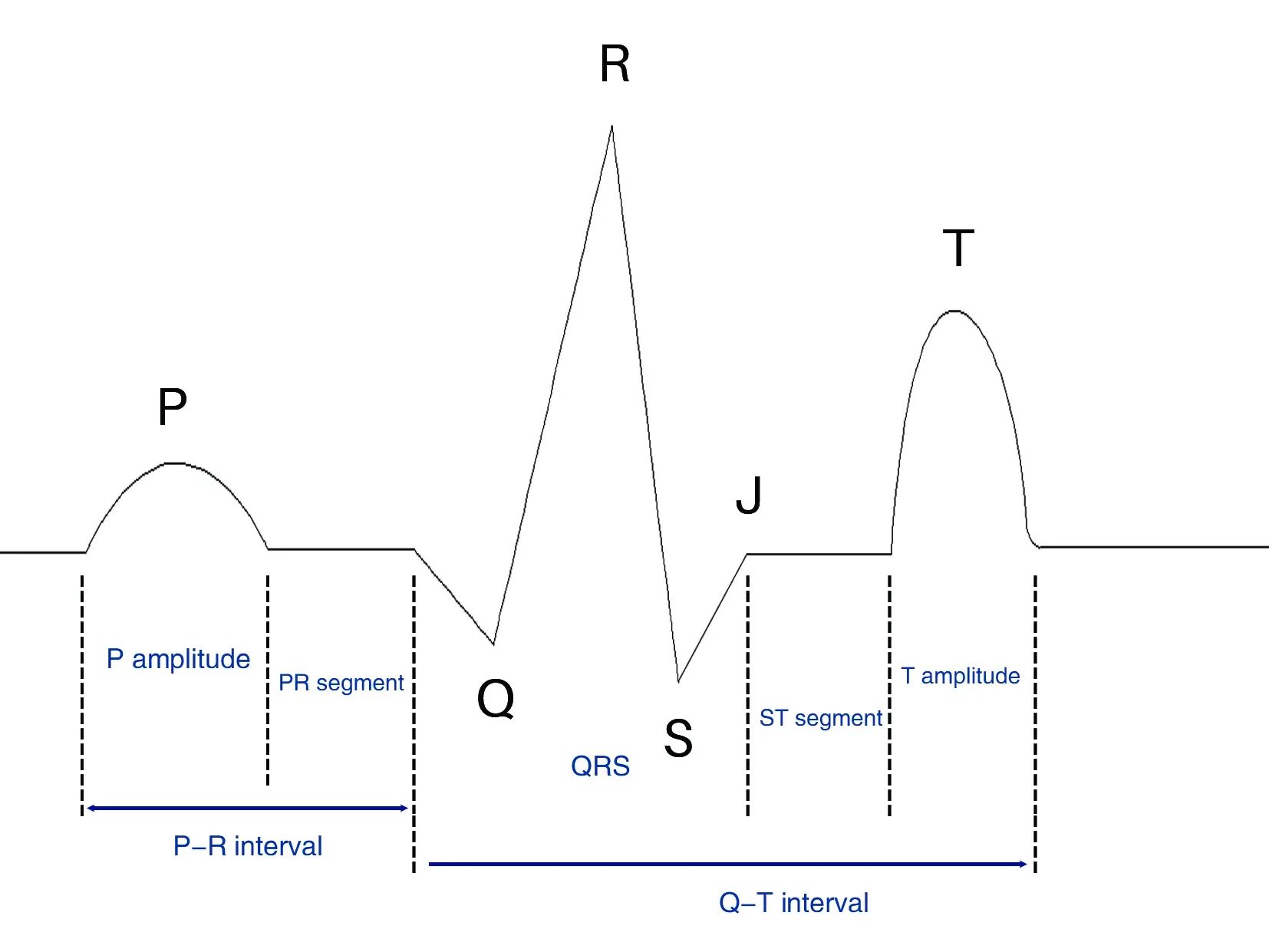Veterinary patient monitors, as critical diagnostic equipment in modern animal healthcare, enable real-time monitoring of core vital sign parameters including ECG waveforms, respiratory rate, arterial blood pressure, and blood oxygen saturation, providing objective data support for clinical decision-making. Compared to human patients, animals exhibit more pronounced variability and individual differences in physiological indicators due to marked species-specific variations (e.g., body size, metabolic rate, and stress responses). Taking dogs as an example, this paper discusses the benchmark range of normal vital signs parameters in the application of monitors.

1. ECG – Electrocardiogram
When measuring electrocardiogram, electrodes need to be accurately placed in different parts of the animal’s body, and these electrodes are connected to the monitor host through a ECG cable, so as to achieve the acquisition and monitoring of cardiac electrical signals.
JERRY veterinary medical monitor can reflect the patient’s ECG waveform, heart rate, ST segment, PVCs and arrhythmia analysis (ARR).
(1) Electrocardiogram of dogs
Electrocardiogram waveforms has important clinical significance, and is one of the important means for clinical diagnosis of heart disease and evaluation of heart function.


Values of electrocardiographic parameters in healthy dogs: (data sources:https://veteriankey.com/for-normal-electrocardiogram/)
| Parameters | Range values | Duration |
| P amplitude | 0.15–0.40 mV | 0.02–0.04 s |
| R amplitude | 0.90-2.4mV (Small breeds) 1.20-2.8mV (Large breeds) | / |
| QRS | / | 0.03-0.04s (Small breeds) 0.04-0.05s (Large breeds) |
| T amplitude | 0.15-0.50mV | 0.04-0.08s |
| P-R interval | / | 0.08-0.12s |
| S-T segment | / | 0.04-0.1s |
| Q-T interval | / | 0.11-0.23s depending on HR |
Normal Electrocardiogram:

Abnormal Electrocardiogram:

(2) HR of dogs – Heart Rate
The normal heart rate range of dogs:
|
Type |
Picture |
HR Range |
|---|---|---|
|
Large breeds |
 |
60~140 beats/min |
|
Adult breeds |
 |
70~160 beats/min |
|
Small/toy breeds |
 |
Up to 180 beats/min |
|
Puppies |
 |
Up to 220 beats/min |
2. NIBP/IBP of dogs – Blood pressure
The dog should be in a relaxed state, operated by a familiar person and cooperated with a low-stimulation environment to obtain accurate blood pressure values. The following is a reference range for normal blood pressure values in dogs:
| Systolic pressure (maximum pressure) | Diastolic pressure (minimum pressure) |
| 120-160 mmHg | 60-90 mmHg |
Note: Puppies or specific breeds may vary slightly and need to be evaluated on an individual basis.
3. SpO2 of dogs – Percutaneous arterial oxygen saturation
The most common measurement is percutaneous arterial oxygen saturation (SpO2). This is a non-invasive method. When measuring SpO2, the probe can be clamped on any thin, hairless and non-pigmented parts with good transmission, such as tongue, auricle, intertoe, lip, etc.
A normal dog’s blood oxygen saturation is 94% to 100%.

4. TEMP of dogs – Temperature
JERRY veterinary monitor uses a professional animal body temperature probe for rectal measurement. The standard range of normal body temperature in dogs is 37.5°C to 39.2°C (anal temperature). The physiological parameter may fluctuate by ±0.3°C depending on individual size, age and measurement period.
5. RESP of dogs – Respiratory rate
The normal breathing rate of dogs should be maintained at 10-30 beats per minute.

If you need more information, please feel free to contact us.








